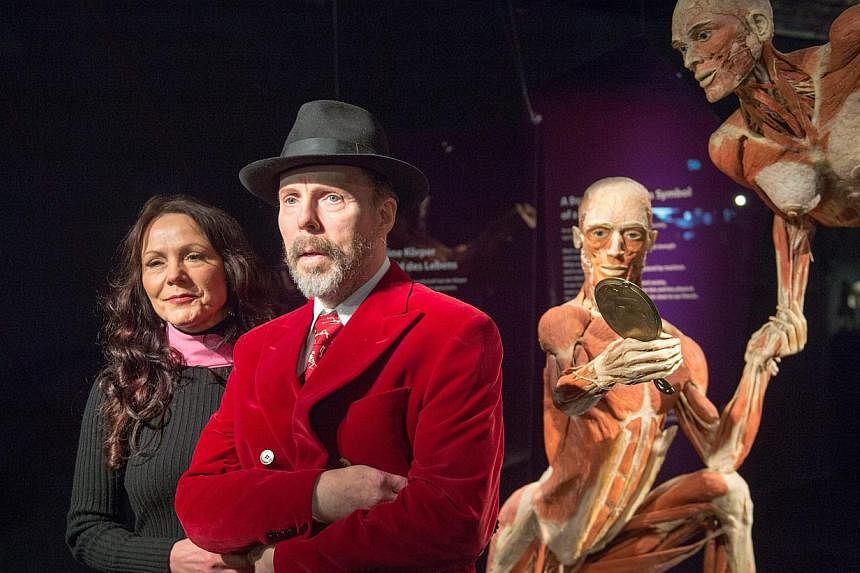BERLIN (REUTERS) - A permanent museum showing preserved corpses stripped of skin to reveal the complexity of the human body opens in Berlin on Wednesday.
The brainchild of German anatomist Gunther von Hagens and his wife Angelina Whalley, the museum displays cadavres infused with silicon rubber and resin in a process known as "plastination", that was invented by von Hagens himself.
Dubbed "Dr Death", von Hagens has been touring his controversial 'Body Worlds' exhibition around the world since 1995, attracting some 40 million visitors.
Berlin is now home to the first permanent showcase for his work, located in front of Berlin's much-loved television tower at Alexanderplatz.
Covering an area of 1,200 sq m, the exhibit displays 20 flayed bodies, which reveal muscles, organs, veins and bones, set up in lifelike poses, such as sitting, stretching and doing sport.
Whalley said the exhibition gives visitors a new perspective on their body and lifestyles. "After visiting the exhibition some people said they would never take their bodies for granted any more," she said, adding that a poll conducted around six months after people visited the travelling exhibitions showed 9 per cent had given up smoking, 23 per cent did more exercise and 30 per cent ate more healthily.
However, not everyone in Berlin was enthused by the prospect of the dead bodies taking up full-time residence in the city.
The museum had to overcome opposition from local authorities who declared the exhibition unlawful, citing local burial laws and a ban on displaying bodies, and tried to prohibit it last October. Van Hagen eventually won the case.
More than mere corpses, some see the exhibits as works of art, including 61-year-old Detlef von Wagner, who has agreed to donate his own body to the plastination process after his death.
"I don't want to just rot or get burned. To me plastination is art. People are paying to see your dead body in a showcase," von Wagner said. "The thought of existing after death is what makes me want to do it. What's more, nobody has to pay for my funeral, which is great, isn't it?"

